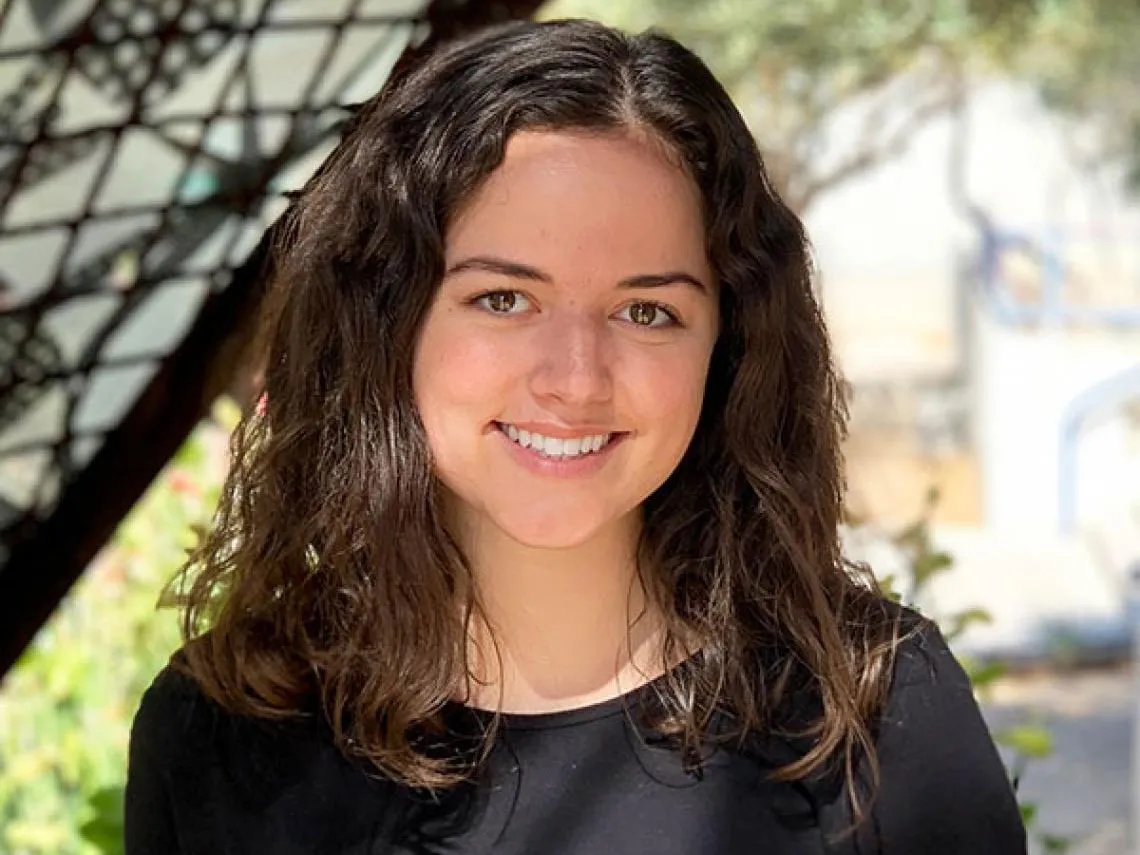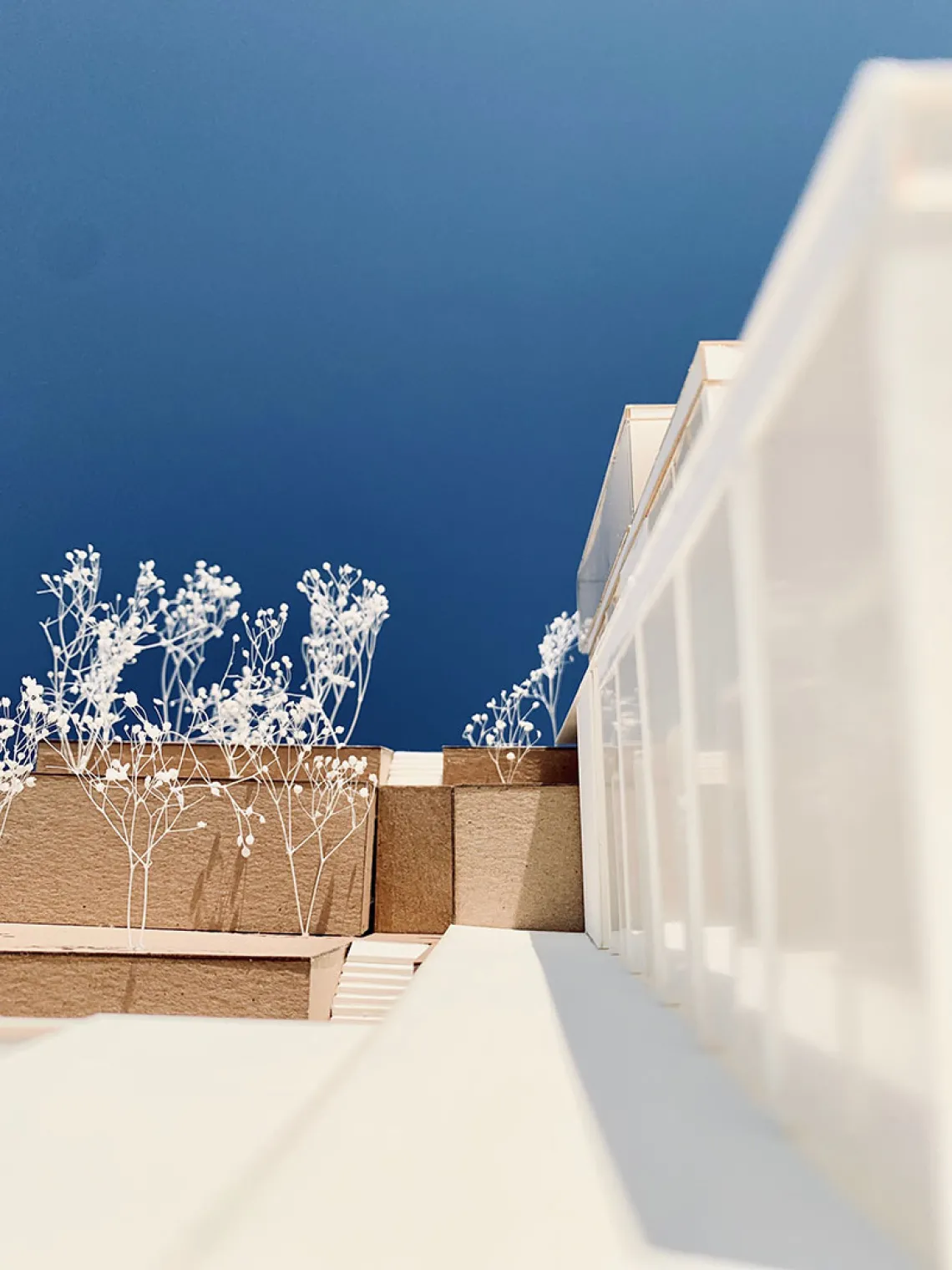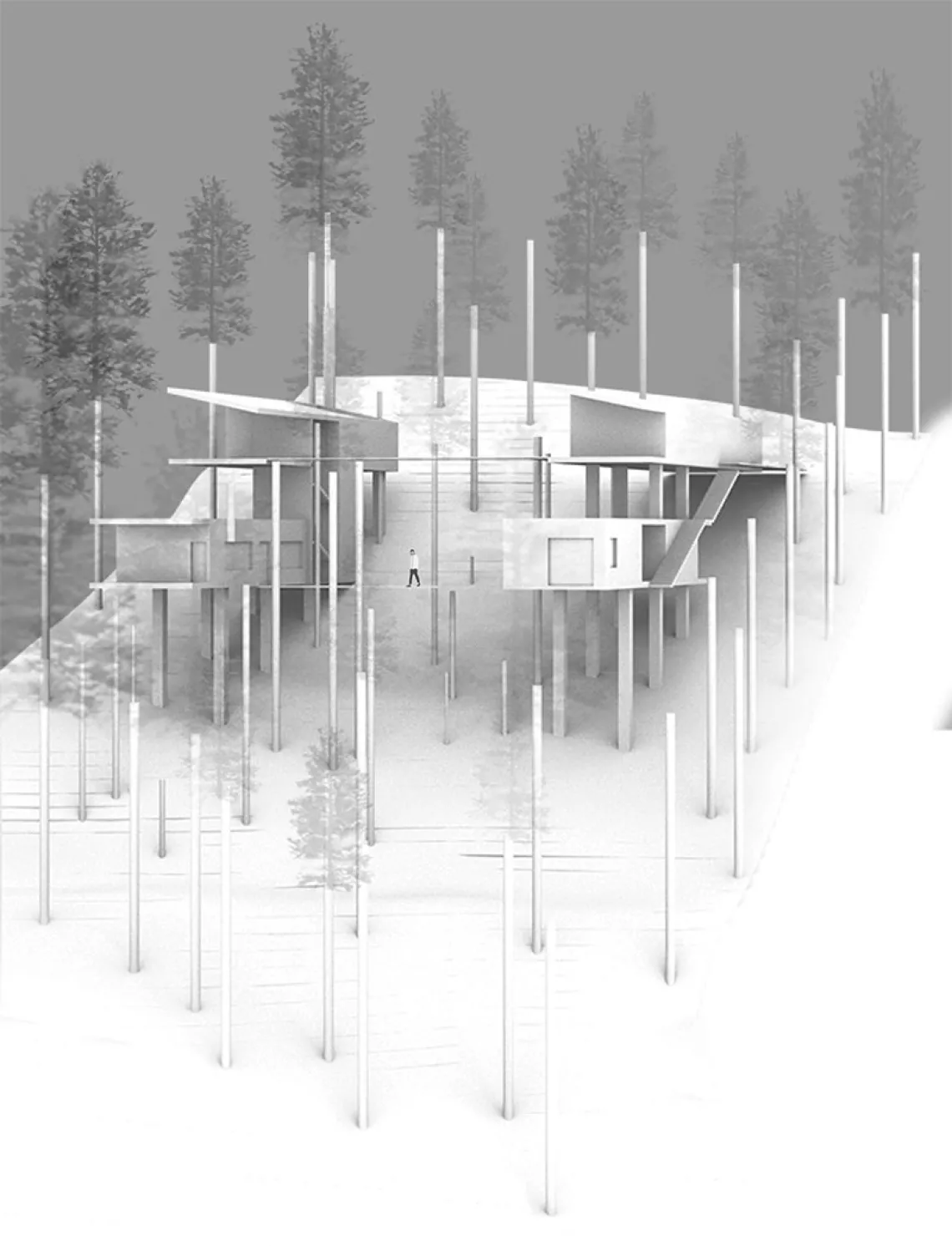Curiosity Becomes Passion: Brooke Sands ’22 B.Arch

Growing up in suburban Chicago, third-year architecture student Brooke Sands recalls heading into the city to visit her father, who worked on the 40th floor of a downtown skyscraper. “I would sit in his chair and stair out the window and think, ‘How are these buildings standing? How does this all work?’”
But it wasn’t until her junior year in high school, and a visit to the College of Architecture, Planning and Landscape Architecture in Tucson with her grandfather, an architect and alumnus, that she knew she wanted to study design. “That’s when I realized it was in my blood. Thinking about what my family did—architect, artist, interior designer, construction superintendent—and what I loved—photography, design—it now seems so obvious.”
Still, her parents—who met and fell in love at the University of Arizona—didn’t push her to study architecture at UArizona. Rather, it was “the rush of adrenaline from walking around the school, seeing the work on the shelves and the incredible Materials Lab... There’s no other school like it.”
Plus: after “18 years of freezing weather I wanted a different environment, a new climate, a new topography.”

Model (and photo) by Brooke Sands.
Once here, Sands found CAPLA welcoming, but she admits at first she was overwhelmed. “Staying busy is one way to manage time,” she says now with a slight smile, listing her roles as president of the University of Arizona’s American Institute of Architecture Students chapter and intern at Tucson’s Dust Architects.
She knows that time management is the biggest challenge for architecture students at CAPLA, particularly first-year students. Now midway through the five-year, accredited Bachelor of Architecture program, she notes that “you reach a level of busyness you learn to manage—whether meetings or projects or readings, exercise or meals or laundry.”
But it’s also what you make of it. “We all stand for the same thing, right?” she says. “We want positive change and positive growth. And I’ve found that here if you ask the right questions of the right professors, you’re going to get your answers. Of course, you formulate your own opinions.”
The architecture faculty—and particularly the diversity of faculty—have made a big difference for Sands. “Each studio professor I’ve had has had a different background. They come from all over—across the world, really—and we study so many different things: urban design, sustainability, materials and fabrication, construction. Being a part of a college that encourages diversity is powerful. I think it’s a unique opportunity that not every college offers.”
Her advice for new students is to similarly ask lots of questions: “If you’re an incoming student and you’re wondering about something, walk into an upper-year studio and say, ‘Hey, tell me a little about what you’re doing.’ I think that’s the quickest and most real way to understand the school.” She’s ready to answer those questions, too: Sands also mentors younger students, just as she was mentored her first year.

Digital design by Brooke Sands.
With so much to keep her busy, perhaps it’s not surprising she takes on another activity to keep herself level. “Cooking and being in the kitchen is therapeutic,” she says. “I love to cook; I grew up in the kitchen with my mom.”
There’s more to it than that, though: “I find so many similarities between architecture and cooking and baking, such as being precise in certainty and risk. In baking, for example, you have to be very precise—you can’t skip a beat on how much you knead the dough or how long bread is in the oven. With cooking, on the other hand, you can take a little more risk; you can add more salt or add lemon. So it is with architecture: the structure of a building is so important and precise and there’s a very specific load—I’m thinking of load path diagrams right now—and the weight and connections must be perfect. That’s the certainty. But then there’s the risk, which is: What’s the forgiveness of the material, wood versus steel, for instance? And: How can you create a design that can impact how a person feels in that space? What’s their experience? You don’t know exactly how the user is going to use it. Of course you have intentions, and these things you think are certain, but really it’s risk.”
Turning back to the student experience, Sands offers a final piece of advice: “There’s a saying I came up with and reflect on as I progress through the architecture program: curiosity becomes passion. In truth, it doesn’t matter what you’re pursuing—be curious and the rest will follow. You’ll find, as I do with architecture, that you love it.”



